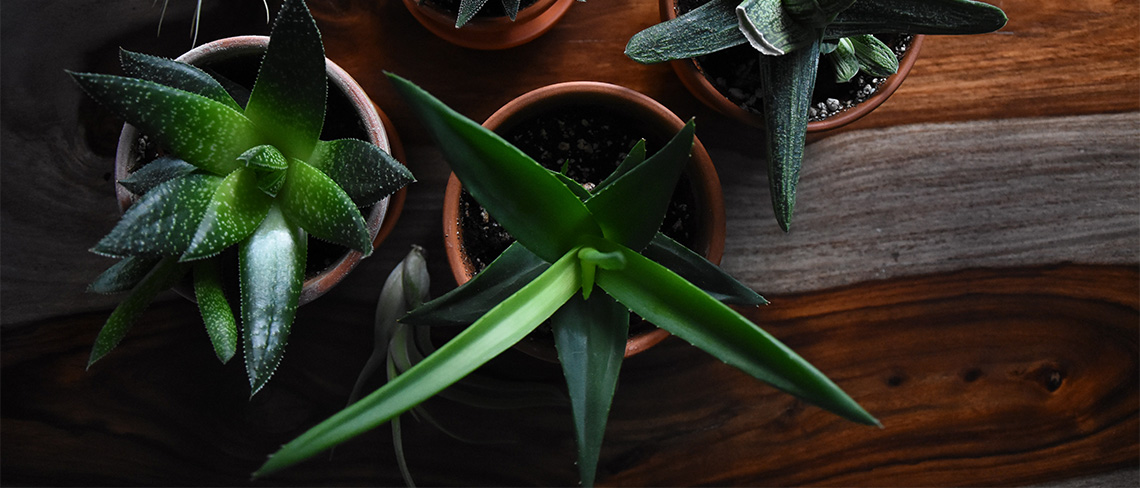
Contura expert provides tips to ensure houseplants flourish now that the days are darker and colder.
It’s important to adjust the way we care for houseplants in autumn and winter. As the nights draw in, shorter daylight hours and colder weather can have adverse effects on plant health. For many types of houseplants, the decreasing levels of daylight from late autumn are nature’s cue to enter a dormant or hibernation stage in preparation for a tough winter ahead.
Think of winter as a period of rest for plants and adjust your watering and feeding routine accordingly. If you continue with your summer routine (more watering and feeding due to warmer weather), this will encourage plants to keep on growing, putting them under more strain and leading to weak, spindly growth.
Here, Catharina Björkman, lifestyle expert at Swedish wood burning stove brand, Contura, has given her guide on how best to care for houseplants in winter to help maximise their health and flourish come spring.
“The trend for keeping houseplants isn’t going away anytime soon and for good reason,” says Catharina. “Plants can instantly brighten up a home and boost our mood. Not only do they provide an interesting interior feature, but they can also be used in design to create ‘zones’ and improve the overall flow of a room whilst boosting the air quality.
“Taking care of plants has been shown to lower stress and anxiety and gives us a sense of accomplishment when a plant thrives under our care. The meditative process of plant-care has many benefits to our physical and mental health, so it makes sense to keep plants healthy with this handy winter care guide.”
Read on for the full winter houseplant care guide.
Make the most of sunlight
Shorter days and less sunshine means you must maximise the amount of light reaching your plants to give them the best chance of surviving through winter. Ideally, move them into a sunny conservatory or porch, so they get light from several directions. West or south-facing windows and windowsills also work well, wherever light naturally falls. You may need to move plants around during the day to ensure they’re receiving the most sunlight possible. Clean windows inside and out to let in as much light as possible, this will also brighten up your entire home.
Clean the leaves
We all know that plants need water and sunlight to flourish, but did you know that dusting the leaves is also important? Household plants can accumulate a thick layer of dust and if not cleaned regularly, the amount of light reaching the leaf surface is reduced, which makes it harder for them to produce food. Use a damp cloth to wipe dust away. Leaf-cleaning products are available but can only be used on certain plant types. Dust plants every few days for optimal sunshine intake and make sure to clean both the topside and bottom side of each leaf.
The right temperature
Most houseplants are at their best between 12 and18°C and dislike large temperature fluctuations. Position them away from cold draughts and open windows or doors as cold weather can make houseplants weaker. If they’re on a windowsill, leave curtains open if possible, as they trap cold air at night which causes plants to droop in cold weather. Alternatively you can move plants off the windowsill at night.
Similarly, plants should be kept away from direct heat sources such as radiators, wood burning stoves and open fireplaces, which can scorch delicate foliage.
Most houseplant varieties are tropical and will prefer a more humid environment. Grouping plants together will raise the humidity level around them, leading to stronger, healthier plants. Simply move the pots closer together – this also makes houseplant maintenance easier and quicker.
Watering
There is no hard and fast rule for how often to water houseplants in the winter. It depends on the type of plant you have, and how warm and dry your house is. However, dormant plants need very little water – too much and they’ll either produce soft, weak growth or will rot as water accumulates in the soil. So for most houseplants, including hardy succulents, reduce watering to once every two to three weeks to avoid overwatering during winter. For cacti, cease watering completely, whilst for winter-flowering plants water whenever the soil feels dry.
Central heating, however, can suck the humidity right out of the air, which is usually not good news for plants. Most common houseplants are tropical species that like high humidity, and they can suffer if the air is too dry. Low humidity can also cause their soil to dry out much faster, so if you have the heating on a lot throughout the winter, it’s advisable to spray your plants regularly to keep the leaves and soil moist.
A simple rule for all plants is to stick your finger into the soil, if it feels moist then don’t water it. When you do water plants, ensure they drain thoroughly, as no plant thrives if kept in stagnant water.
Pest check
A cosy house provides the perfect environment for plant pests to thrive and breed over winter. The most common pests are aphids, scale insects and mealybugs. Inspect your plants thoroughly, look under the leaves and check the soil. Plants that have spent summer outdoors can bring new pests indoors, so remove any that you find. Pest killers can be found in most supermarkets.
Resist repotting
Don’t repot plants or cuttings unless necessary during winter. Transplanting houseplants in winter can trigger new growth, and winter growth is usually leggy and weak. It also puts a lot of stress and strain on new plants, which won’t grow to their full potential. However, if a houseplant’s soil dries out almost as soon as you water it, or the plant is suffering in a too-small pot, then you can repot it. Keep a close eye on any re-potted plants to ensure they thrive.
For more information on Contura, please visit http://www.contura.eu
-Ends-
Notes to editors:
- Rooster PR will coordinate comment, interview and profile opportunities for Contura UK Country Manager, Phil Wood.
- The Contura PR team will also arrange visits to the nearest Contura Design Centre dealerships or the Contura showroom in Doncaster to see the product range.
For further press information, please contact:
Elsa Findlay | Jo Kendall | Julie Aguilera
Rooster PR
T: +44 (0)20 3440 8930
E: [email protected]
About Contura:
Contura is Europe’s leading manufacturer of wood burning stoves, offering an extensive range of classic and contemporary wood burners; from traditional insert stoves suitable for existing fireplaces, to freestanding statement models made with innovative materials such as soapstone.
Starting at £1,095, Contura stoves are premium yet affordable. Award winning, timeless Swedish design means the products complement or enhance any style of home, whilst also offering outstanding performance, maximum efficiency, practicality and ease of use.
Designed and assembled at the factory located in Markaryd, Sweden, and manufactured to the highest standards, Contura stoves are highly energy efficient, offering powerful convection, superior combustion technology and clean burning systems. Currently, 95% of Contura stoves are DEFRA Clean Air Act exempt and thus approved for use in Smoke Control Areas.
Contura stoves can be purchased through a network of 165 independent retailers nationwide.
Contura is part of the NIBE group, a Swedish manufacturing company producing world class solutions in sustainable energy across Europe, North America, Asia and Australia.
Contura is a founding member of the Stove Industry Alliance (SIA) in the UK.
For more information please visit www.contura.eu






